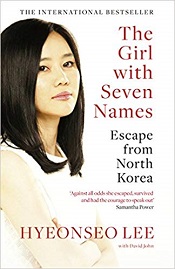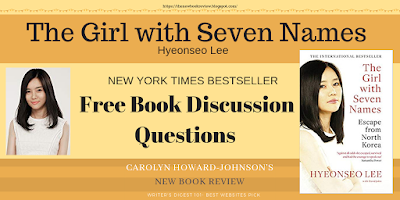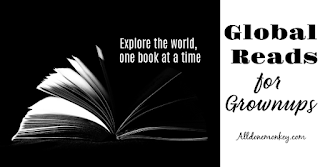
Title: A Life on Our Planet: My Witness Statement and a Vision for the Future
Author: Sir David Attenborough
Publisher: Grand Central Publishing (October 6, 2020)
Publisher Website
Publisher Contact
ASIN: B089CKYNT9
ISBN-10: 1538719983
ISBN-13: 978-1538719985
Pages: 272
Price: Kindle $14.99, Audio Book $12.99, Hardcover $23.40, Audio CD $26.00
Format: Kindle, Audiobook, Hardcover, Audio CD
Film: Available on Netflix
Sir David Frederick Attenborough is an English broadcaster and natural historian. He is best known for writing and presenting, in conjunction with the BBC.
Discussion Guide Instant Download Link
A Life on Our Planet describes his lifetime and the climate changes he witnessed first-hand. It is an autobiography not of him but planet Earth during the Holocene and Anthropocene. The Holocene, he says, was 10,000 years of our Garden of Eden. The Anthropocene is the next period during which human activity has been the dominant influence on climate and the environment, most likely since the 1950s. And, you have probably guessed, it is the time of global warming and could end in the disappearance of human civilization. He says we need to save ourselves, not the Earth. The Earth has survived five previous mass extinctions and will continue.
Discussion questions based on the book:
1. How is humankind different from all other species, and why did this cause the climate difficulties we are now facing?
2. Homo Sapiens, people, are no longer changing physically, so what is changing about us now? Provide an example.
3. What does Attenborough say about human mistakes and bad planning (at the beginning and end of the book)?
4. What is the true tragedy of our time?
5. What is one dire possible outcome? What consequences could cause mass migration by 2100?
6. What is a better and still possible outcome? What do we need to do to have this better ending?
7. Are solutions available now? What are some examples of countries demonstrating progress?
8. Why is modern life unsustainable? What is the definition of sustainability?
9. Why is eating meat and dairy such a problem for the climate?
10. What are the leading causes of climate change and global warming?
His latest movie, also his mission statement, A Life on Our Planet, may be his best work ever. Oblivious to climate change as a young man, he realized the importance of saving the planet – wait, not the Earth, but ourselves. The planet will continue. We may not.
He provides simple answers to correct the course we are on, damaging Earth, animals, biodiversity, and ourselves. We already know what to do to save life on Earth. Will we do so?
Discussion questions based on the book:
1. Attenborough states Earth is a life support machine. What does he mean?
2. He mentions biodiversity many times. What are some examples he provides of how are we dependent on biodiversity?
3. Ice at the poles helped during the Holocene Epoch (the past 10,000 plus years and currently). What did they do for our planet?
4. Attenborough says there was a stable air temperature in the 1990s. The Earth was actually warming as something was masking the problem. What is his explanation?
5. Discuss: 15 billion trees are cut down each year on Earth. Did you know before watching the film?
6. How do no fish zones increase fish populations? What country’s policies illustrates this truth?
7. In a single day, he said there is more than enough solar power from the sun to do what?
8. How does eating meat impact climate change? What does he say a person is “saying” when he or she eats meat?
9. The Netherlands was held up as a country using innovative farming techniques as they do not have more land. They used fewer chemicals to grow more food. What else did you notice in this segment?
10. Attenborough says we need to work with nature, not against it and mentions several methods of doing so. Have you noticed efforts in this direction? Why are they important?
Thank you for reading, Carolyn Wilhelm
More About Carolyn Wilhelm:
Carolyn Wilhelm, a veteran educator, owns Wise Owl Factory LLC and reviews for Midwest Book Review and The New Book Review where she occasionally writes study guides for film and books like this one. She is the author of Change Captives 2035 and Project SAVE . Learn more about her:
About #TheNewBookReview Blog
The New Book Review is blogged by Carolyn Howard-Johnson, author of the multi award-winning
HowToDoItFrugally series of books for writers. Authors, readers, publishers, and reviewers may republish their favorite reviews of books they want to share with others. That includes authors who want to share their favorite reviews, reviewers who'd like to see their reviews get more exposure, and readers who want to shout out praise of books they've read and love. Please see submission guidelines in a tab at the top of this blog's home page or go directly to the form at https://www.bit.ly/FinishedReviewSubmissions. Authors and publishers who do not yet have reviews or want more may use Lois W. Stern's "Authors Helping Authors" service for requesting reviews. Find her guidelines in a tab at the top of the home page, too. And know that Carolyn Wilhelm, our IT expert, award-winning author, and veteran educator, makes an award image especially for those who volunteer to write reviews from Lois's review-request list and post them in the spirit of her "Authors Helping Authors" project.
Reviews, interviews, and articles on this blog are indexed by genre, reviewers' names, and review sites so #TheNewBookReview may be used as a resource for most anyone in the publishing industry. As an example, writers will find this blog's search engine handy for gleaning the names of small publishers. Find other writer-related blogs at
Sharing with Writers and
The Frugal, Smart and Tuned-In Editor. #TheFrugalbookPromoter, #CarolynHowardJohnson, #TheNewBookReview, #TheFrugalEditor, #SharingwithWriters, #reading #BookReviews #GreatBkReviews #BookMarketing
 The New Book Review is blogged by Carolyn Howard-Johnson, author of the multi award-winning HowToDoItFrugally series of books for writers. Of particular interest to readers of this blog is her most recent How to Get Great Book Reviews Frugally and Ethically (http://bit.ly/GreatBkReviews ) It has 325 jam-packed pages covering everything from Amazon Vine to writing reviews for profit and promotion. Reviewers will have a special interest in the chapter on how to make reviewing pay, either as way to market their own books or as a career path--ethically!
The New Book Review is blogged by Carolyn Howard-Johnson, author of the multi award-winning HowToDoItFrugally series of books for writers. Of particular interest to readers of this blog is her most recent How to Get Great Book Reviews Frugally and Ethically (http://bit.ly/GreatBkReviews ) It has 325 jam-packed pages covering everything from Amazon Vine to writing reviews for profit and promotion. Reviewers will have a special interest in the chapter on how to make reviewing pay, either as way to market their own books or as a career path--ethically!










